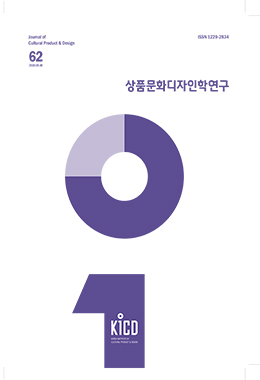오늘날 생활 가전 분야에서 의미 있는 변화가 일어나고 있으며, 얼마 전까지 생소했던 기업들이 소비자들의 관심을 집중시킴으로써 기존의 다국적 가전 기업들을 위협하는 상황이 전개되고 있다. 실제로 이탈리아의 SMEG design, 일본의 Balmuda 그리고 MUJI design이 독창적인 기업경영전략과 그에 상응하는 디자인 철학을 중심으로 세계 소비시장의 체계변화를 이끌어내고 있다. 이에 미학적 기능주의 디자인을 완성하였던 독일 브라운사를 중심으로 이들 3사의 디자인과 함축적 특성을 고찰할 필요성이 인식되었다. 본 연구에서는 1980년대 이전 브라운사에 의해 상속된 미학적 기능주의의 조형적 유산이 21세기 디자인 환경에서도 여전히 유효하다는 사실과 함께 이들 3사의 디자인 함축성의 유사성과 차이를 발견할 수 있었다. 이를 위해 제 2단원에서는 문헌적 조사를 통해 브라운사를 포함하여 4사의 디자인 철학과 디자인적 차별성에 대하여 고찰하였다. 또한 이들 4사의 디자인에 내제되어있는 함축적 결과를 도출하기 위해 해석학을 기반으로 제시되었던 평가 툴을 사용하였으며, 객관적결과를 도출하기 위한 설문과정에서는 해당 용어와 의미공간에 대한 설명을 선행하였다. 설문에는 디자인 학부생과 대학원생 30인 그리고 일반인 20이 참여하였으며 설문의 평균값을 최종적으로 도식화하였다.
Meaningful changes are taking place in the field of electronic household appliances, with formerly unfamiliar companies attracting consumer attention, threatening the positions of previously strong multinational appliance manufacturers. In fact, SMEG of Italy, as well as Balmuda and MUJI of Japan, are employing unique corporate management strategies and corresponding design philosophies to bring about systematic changes in the global consumer market. As such, there is a need to consider the designs of these three companies and their implied characteristics, focusing on the design of the German company Braun, which completed the aesthetic functionalism design. The current study discovers the similarities and differences of the three companies’ design implications, along with the fact that the formative legacy of aesthetic functionalism succeeded by Braun before the 1980s is still valid in the twenty-first century design environment. To achieve this end, Chapter 2 conducts literature review that considers the design philosophies and unique design features of the four companies including Braun. Also, to derive the implied results inherent in the designs of these four companies, a previously suggested assessment tool based on analytics is used. In the survey for deriving objective results, an explanation of the terms and semantic space are provided in advance. The survey was participated by thirty undergraduate and graduate design students and twenty members of the general public, and the mean values of the survey results are schematized in the end.


